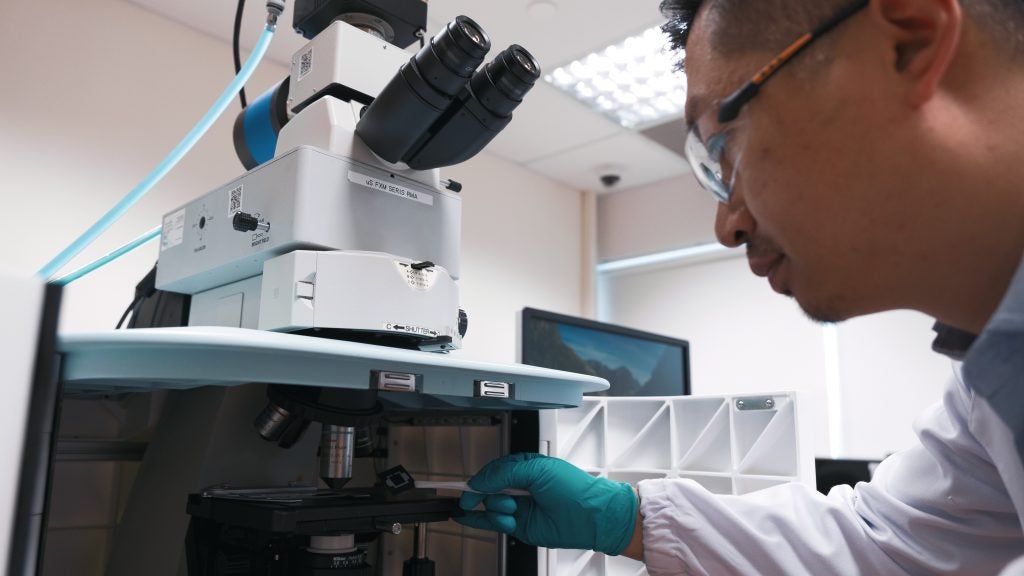
Two advancements in aerogel technology, with innovative applications in radiative cooling and electromagnetic wave absorption, have been unveiled by researchers from CDE. The two projects, led by Associate Professor Duong Hai-Minh (Mechanical Engineering), could deliver significant improvements in energy management and protection from electromagnetic pollution.
In one project, Assoc Prof Duong and team used plastic waste to develop thin-film aerogels that function as thermal insulators and radiative coolers. Suitable for use on any surface, such as building roofs to reduce internal temperatures, the breakthrough offers a scalable and sustainable solution for energy-free thermal management.
In a separate study, the researchers also devised a simple, scalable method to produce aerogels that absorb electromagnetic waves (EMWs) in the X-band, such as is used in weather monitoring and air traffic control. These lightweight, durable aerogels protect against electromagnetic pollution, shielding both humans and sensitive equipment.
Known for their porosity and ultra-low density, aerogels are highly versatile solid materials. Initially developed for use as thermal insulation in the aerospace industry, Associate Professor Duong and his team have pioneered several recent aerogel innovations, transforming waste materials into advanced aerogels with diverse applications.
Aerogel for radiative cooling
In the cooling study, published recently in the journal Solar Energy, the team developed an aerogel from upcycled waste plastic bottles for use as a sustainable passive cooling alternative to energy-intensive air conditioning systems. The aerogel leverages a natural process known as radiative cooling to dissipate heat into space without consuming energy.
“This process involves using specially engineered aerogels to emit infrared radiation through the atmospheric ‘sky window’, effectively cooling surface temperatures below ambient levels,” said Assoc Prof Duong. “We are excited to be able to upcycle fibres from disposable polyethylene terephthalate (PET) bottles for the new aerogels designed for this purpose, to help address the global plastic waste crisis.”

The team has previously used upcycled PET fibres to produce aerogels, but this latest method is significantly more energy-efficient, consuming about 97 per cent less energy and reducing production time by 96 per cent. Field tests in Singapore demonstrated that a mere 0.5 centimetres of the new aerogel material could lower temperatures by 2C.
“Our new aerogel could reduce energy consumption in both residential and commercial buildings, especially in tropical climates where cooling is now a necessity,” said Assoc Prof Duong. He added that future research will focus on adapting the PET aerogels for diverse climatic conditions and expanding their applications, such as in industrial processes where the efficient thermal management of liquid circulation pipes is crucial.
Aerogel for electromagnetic wave (EMW) absorption
In the EMW study, published earlier this year in the journal Carbon, the researchers introduced a novel aerogel able to provide critical protection against electromagnetic pollution, shielding both people and sensitive electronic equipment.
Many modern electronic devices emit EMWs that can cause disruption to nearby equipment and pose health risks to humans. It is critical, therefore, to develop materials that can effectively absorb EMWs to protect both people and infrastructure from these effects, enhancing the privacy and security of buildings as well as protecting sensitive medical equipment.

To address this need, Assoc Prof Duong’s team developed a scalable and eco-friendly procedure to produce an aerogel that is effective at EMW absorption. The process involves blending three main components — carbon nanotubes, polyvinyl alcohol and carboxymethyl cellulose — followed by freeze-drying.
The resulting aerogel, with a thickness of about 3 millimetres demonstrated a capability to absorb 99.99 per cent of EMW energy. Across the entire X-band of the electromagnetic spectrum - used primarily for radar systems, weather monitoring and air traffic control - the aerogel consistently showed its ability to absorb 90 per cent of EMW energy.
“In addition to offering a wide absorption bandwidth of 1.2–2.2 GHz in the X-band, our aerogel is also about 10 times lighter than existing composites used for EMW absorption,” said Assoc Prof Duong. “Unlike other composites, our aerogel requires no mixing with heavy polymer fillers before use.”
The researchers have estimated that producing one square metre of the aerogel, with a thickness of one centimetre, costs less than S$100 - substantially lower than the price of other similar commercial materials.
Looking ahead, the team plans to refine the aerogel’s mechanical properties, such as flexibility, to broaden its applicability across various building and infrastructure projects. The researchers also aim to conduct real-world tests to fully assess the EMW absorption capabilities of the aerogels in practical scenarios.





